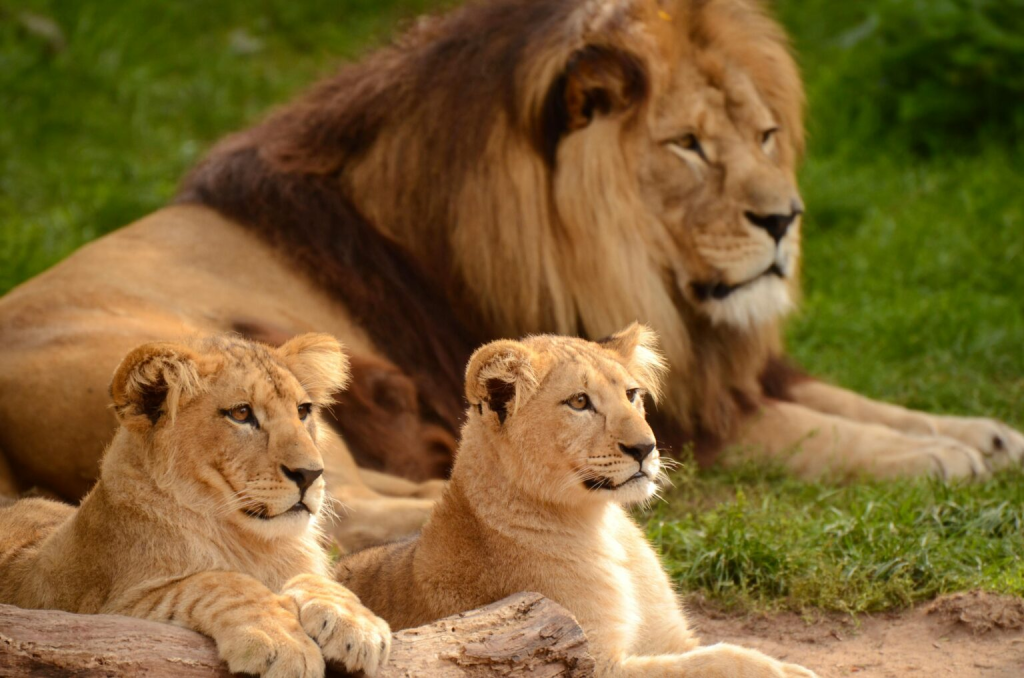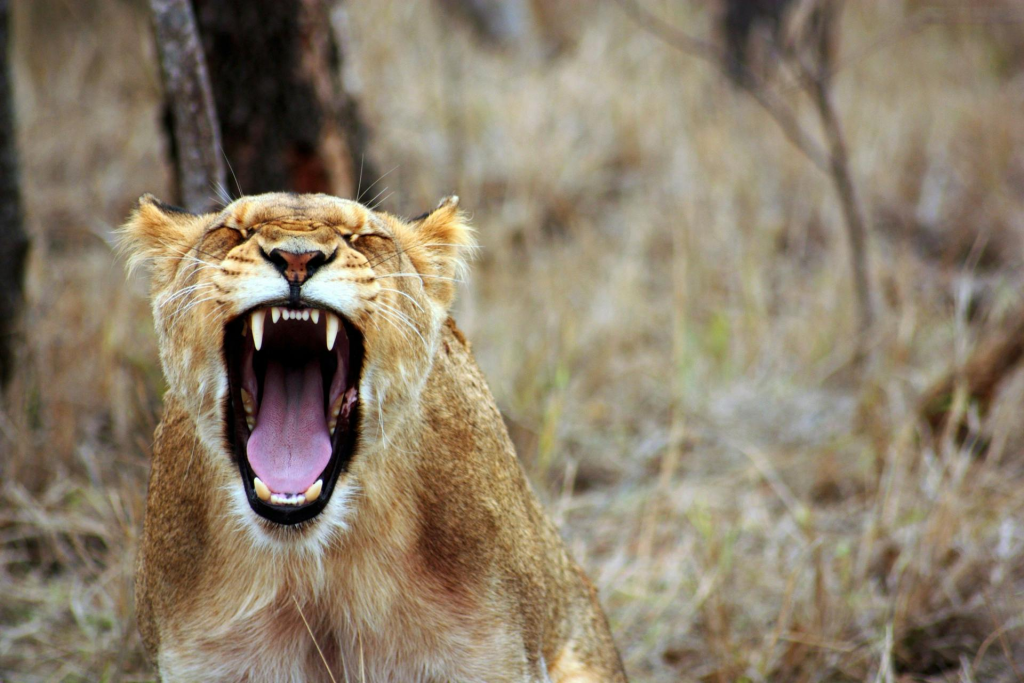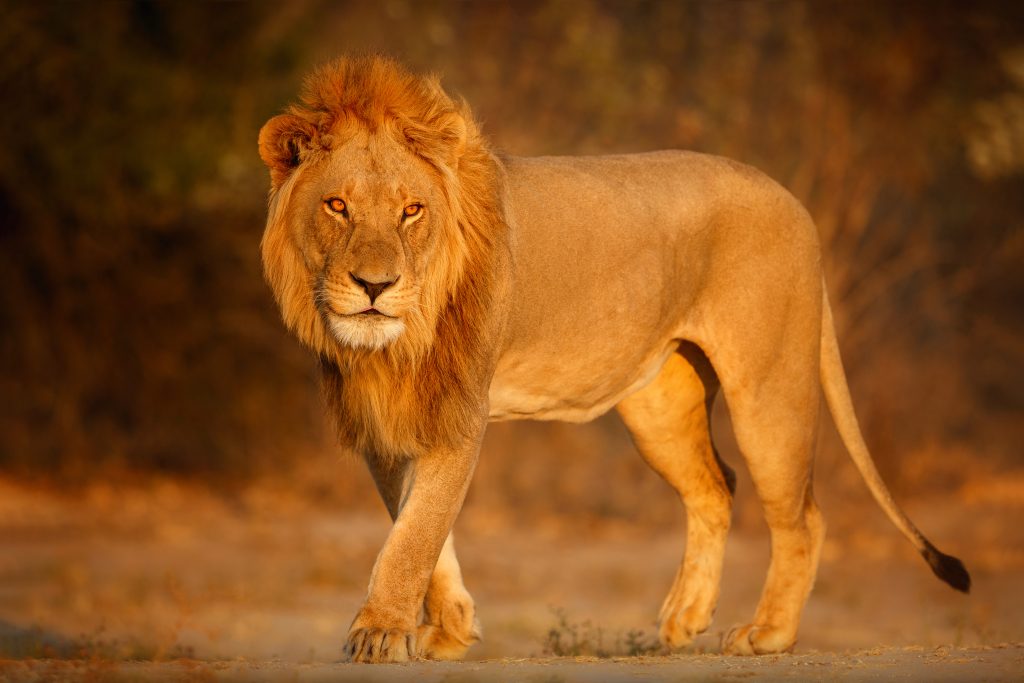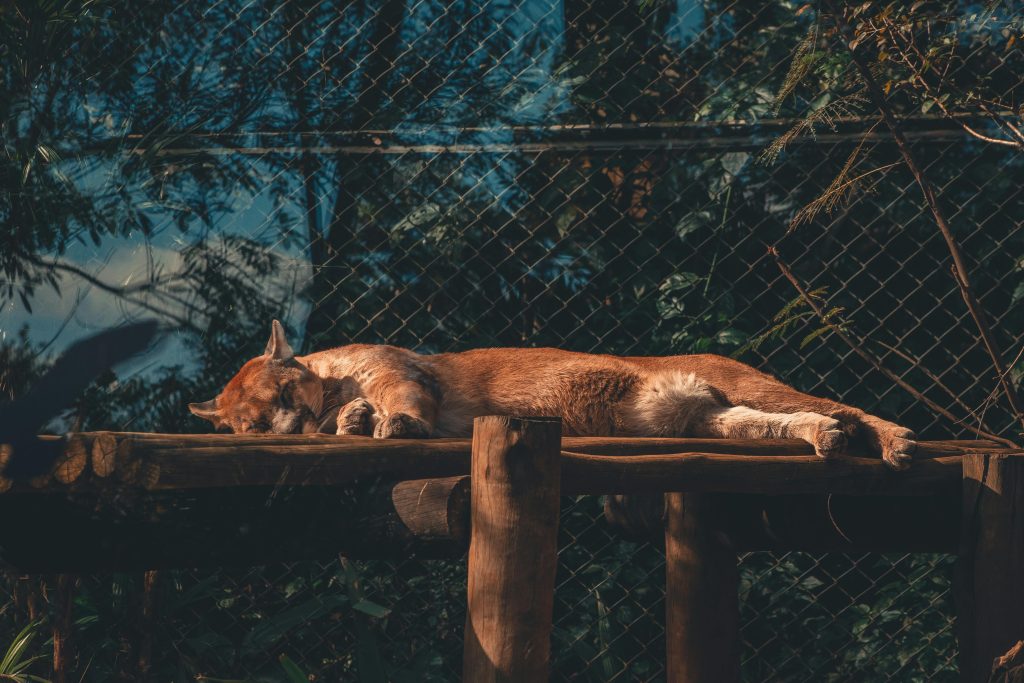Your cart is currently empty!
Mountain Lion’ That Made School Go Into Lockdown Turned Out to Be a Fat Cat

Have you ever mistaken a shadow for something sinister? A coat hanging just right becomes a figure in the hallway. A rustle outside the window suddenly sounds like a threat. In those fleeting moments, our minds sprint ahead of reality, filling in blanks with worst-case scenarios. It’s not imagination gone wild it’s survival instinct doing its job.
That’s exactly what happened one morning in Moses Lake, Washington, when a local elementary school went into lockdown. The reported threat? A mountain lion near the playground a very real danger in a state where cougars roam freely. Doors were locked. Children were sheltered. Fear took the reins.
But when the dust settled, the wild predator turned out to be… a chubby orange housecat named George, crouched in the grass, enjoying a rat for breakfast.
It’s a headline made for viral fame equal parts hilarious and heartwarming. Yet beneath the humor lies something far more human: a reminder of how easily fear distorts our vision, and how often we react to danger that isn’t there. This wasn’t just a case of mistaken identity. It was a snapshot of how perception, emotion, and environment collide not just in wildlife sightings, but in our everyday lives.
The Anatomy of a Misidentification
The scene at Goff Elementary School unfolded with the kind of urgency reserved for real emergencies. A teacher spotted what they believed to be a mountain lion on the edge of school grounds a credible threat in rural Washington, where cougars are known to roam. Within moments, the school snapped into lockdown protocol: doors secured, blinds drawn, students ushered to safety. The atmosphere shifted from calm to controlled concern in a heartbeat.
From the outside, this might sound like an overreaction. But in context, it was anything but. Washington state is home to an estimated 1,500 to 2,500 mountain lions, also known as cougars, according to the Washington Department of Fish and Wildlife. These elusive predators are most active at dawn and dusk precisely when the reported sighting occurred. Add in low visibility and the high stakes of child safety, and the school’s response becomes not just reasonable, but commendable.

The teacher’s report, though ultimately incorrect, was rooted in genuine concern. In the dim morning light, they saw a crouched, low-slung animal with a long tail classic features of a cougar. What they actually saw was George, a large domestic orange tabby, mid-meal on an unsuspecting rat. From a distance and under stress, the distinctions between the two blurred and fear filled in the gaps.
This is where misidentification takes root: in the intersection of limited information, heightened emotion, and real-world plausibility. It’s not about carelessness or exaggeration. It’s about the brain’s instinct to prioritize safety over certainty. When potential danger looms especially in settings involving children split-second decisions aren’t optional; they’re essential.
Interestingly, this incident isn’t an isolated one. Just weeks after the Moses Lake episode, a nearly identical scenario played out in South San Francisco, where a homeowner’s security camera footage led police to investigate a reported mountain lion prowling a neighborhood. After a thorough search, officials confirmed it was, again, a large domestic cat. And in another case with much graver implications, a real mountain lion cub wandered into a California classroom and was discovered hiding under a teacher’s desk, a stark reminder that not all sightings are false alarms.
The Psychology Behind What We See

Psychologists have long studied how our brains interpret ambiguous stimuli during moments of uncertainty. At the heart of this lies threat perception bias a cognitive shortcut that compels us to overestimate the presence or severity of danger. It’s not irrational. It’s evolutionary. In the wild, assuming that a rustle in the bushes might be a predator increased our ancestors’ chances of survival. Better to jump at a shadow than become prey.
That same instinct kicked in at Goff Elementary School. A teacher, acting on a flash of movement and a vague silhouette, didn’t pause to weigh probabilities. They responded to what their brain suggested might be true. That’s exactly how threat perception bias works: it doesn’t wait for confirmation, it acts on potential.
Another layer in this psychological cascade is confirmation bias our tendency to interpret new information in a way that confirms what we already suspect. In a region where mountain lion sightings are not uncommon, and during a time of day when they’re typically active, it becomes easier for the brain to conclude: “Yes, that must be a cougar.” The orange fur, the crouched body, the proximity to children it all fits, if you believe it does.
This isn’t a flaw. It’s protective. But it can also mislead.
Our perception isn’t a passive reflection of reality; it’s a construction. We don’t just see with our eyes we see with our experiences, our fears, our expectations. That’s why a cat eating a rat in the grass becomes a mountain lion in our minds. It’s also why a delayed text feels like rejection, or why a friend’s silence sounds like judgment. Our internal alarms are wired to keep us safe but they aren’t always calibrated for accuracy.
Why the Mistake Was Understandable
Start with geography. Washington state is mountain lion country. With vast stretches of forest, foothills, and open terrain, the region is a natural habitat for cougars. According to the Washington Department of Fish and Wildlife, mountain lions live throughout the state and their sightings have been increasing in recent years particularly in suburban and semi-rural areas like Moses Lake. Schools located near greenbelts or undeveloped land are not immune. In fact, they often sit on the edge of overlapping human and wildlife territory.
Add to that the behavioral patterns of these animals. Mountain lions are crepuscular, meaning they’re most active during dawn and dusk exactly when the teacher at Goff Elementary glimpsed George. The lighting was dim. The distance was likely substantial. The shape was ambiguous. All the right ingredients for uncertainty were in place. In that moment, a cautious mind doesn’t wait for crystal clarity. It acts.
Even for those with some familiarity with animals, making an accurate identification in low visibility is difficult. Size and proportion are notoriously hard to judge without reference points. A large domestic cat crouching in tall grass can appear deceptively large, especially if the viewer is already on alert. The fear factor only amplifies this distortion.
There’s also something deeply human at play here: the instinct to protect. When the perceived risk involves children, hesitation isn’t just unwise it’s unthinkable. Claren McLaughlin, the school district’s communications officer, noted that this was the first report of its kind the school had ever received. That novelty added urgency. No one wanted to take chances.
And they were right not to. The consequences of inaction, had the threat been real, are unthinkable. Just ask the staff at Pescadero High School in California, where a real mountain lion cub was found inside a classroom, hiding under a teacher’s desk. In that case, a quick-thinking teacher closed the door and contained the animal until wildlife officials arrived. It wasn’t a drill it was a reminder that sometimes, the wild does walk through the door.
The Cost of Assumption And the Value of Caution
There’s a delicate balance between overreacting and acting responsibly, and Goff Elementary landed firmly on the right side of that line. In a world increasingly defined by unpredictability whether it’s extreme weather, public health scares, or school safety swift, even preemptive action isn’t just smart. It’s necessary.
This idea echoes across disciplines. In emergency management, the principle of “better safe than sorry” isn’t a cliché it’s protocol. When a report comes in of a potential threat, authorities don’t wait to be certain. They assume the worst so they can protect the most. False alarms, in that context, aren’t failures; they’re evidence of a system that works.
The same logic applies to our personal lives. We often talk about caution as if it’s synonymous with fear. But caution, at its core, is care. It’s listening when something feels off in a relationship. It’s checking in on a friend who’s gone quiet. It’s following your gut when something at work doesn’t feel right. In these moments, hesitation in the name of not wanting to “overreact” can have consequences that far outweigh the temporary discomfort of being wrong.
At the same time, unchecked assumptions can cause harm in the opposite direction especially when they’re shaped by fear or bias. We assume a partner’s silence is anger. We read criticism into a colleague’s tone. We conclude we’re unworthy based on one misinterpreted interaction. These assumptions lead us to build walls, pull away, or act defensively, often without cause.
That’s why how we act on caution matters. There’s a difference between being vigilant and being reactive. Goff Elementary didn’t panic; they followed a plan. They protected the children without dramatizing the moment. And when the truth came out, they laughed not because the fear was foolish, but because it had passed.
What Are We Mistaking for Mountain Lions in Our Lives?

We laugh at George now the portly orange tabby who triggered a school lockdown while enjoying his rat breakfast but his story holds up more than just a mirror to our emergency response systems. It reflects something deeper, something more personal: the quiet ways we misidentify threats in our own lives every single day.
Because the truth is, we all have our “Georges.”
Maybe it’s the job we don’t apply for because we assume we’re underqualified. The friend we don’t call back because we think they’re upset. The creative idea we abandon because someone once called us “too much.” Our minds protective, deeply wired, and often overstimulated are masterful at mistaking discomfort for danger, uncertainty for rejection, and vulnerability for risk.
This is the George Effect: the instinct to treat every ambiguous flicker in our lives as a predator waiting to pounce.

It’s the email without a “thank you” that makes us question our worth. The awkward silence in a conversation we interpret as judgment. The missed opportunity we don’t pursue because we’re sure it will go wrong. Like the teacher who saw a shadow and filled in the blanks with a mountain lion, we often do the same with the unknowns in our own stories.
And just like at Goff Elementary, those assumptions shape our responses. We lock down emotionally. We retreat from connection. We prepare for heartbreak or humiliation before it even arrives. We try to stay safe and in doing so, sometimes keep ourselves from fully living.
But here’s the good news: not every crouched shadow is a mountain lion. Sometimes it’s just George. Sometimes it’s just fear, dressed up as certainty, gnawing on a rat made of self-doubt.
This doesn’t mean fear is invalid far from it. It means we must learn to pause before letting it steer. To ask: Is this truly a threat, or is it a story I’m telling myself? To check our assumptions against reality before they become conclusions.
Not Every Shadow Is a Predator
The story began with a lockdown and ended in laughter. But in between lived a powerful truth: our assumptions especially when shaped by fear are not always accurate, and our first reactions are not always the whole story.
Goff Elementary didn’t fail. The teacher who reported the sighting wasn’t foolish. They responded with care, caution, and speed, just as they were trained to. But what makes this story linger what turns it from a fleeting headline into something more lasting is the metaphor it leaves behind.
How many moments in our lives have we locked down because of a mistaken threat? How often have we shut the door on conversations, opportunities, or connections because something felt dangerous only to later realize it was just unfamiliar, or vulnerable, or new?
The next time fear rises, the next time instinct pulls the alarm, take a breath. Look again. Ask yourself: Is this really a mountain lion… or could it be George?
Choosing awareness over assumption doesn’t make you less safe it makes you more present. More responsive. More free. And perhaps most importantly, more open to seeing things and people, and even yourself as they truly are, not just as fear would have you believe.
